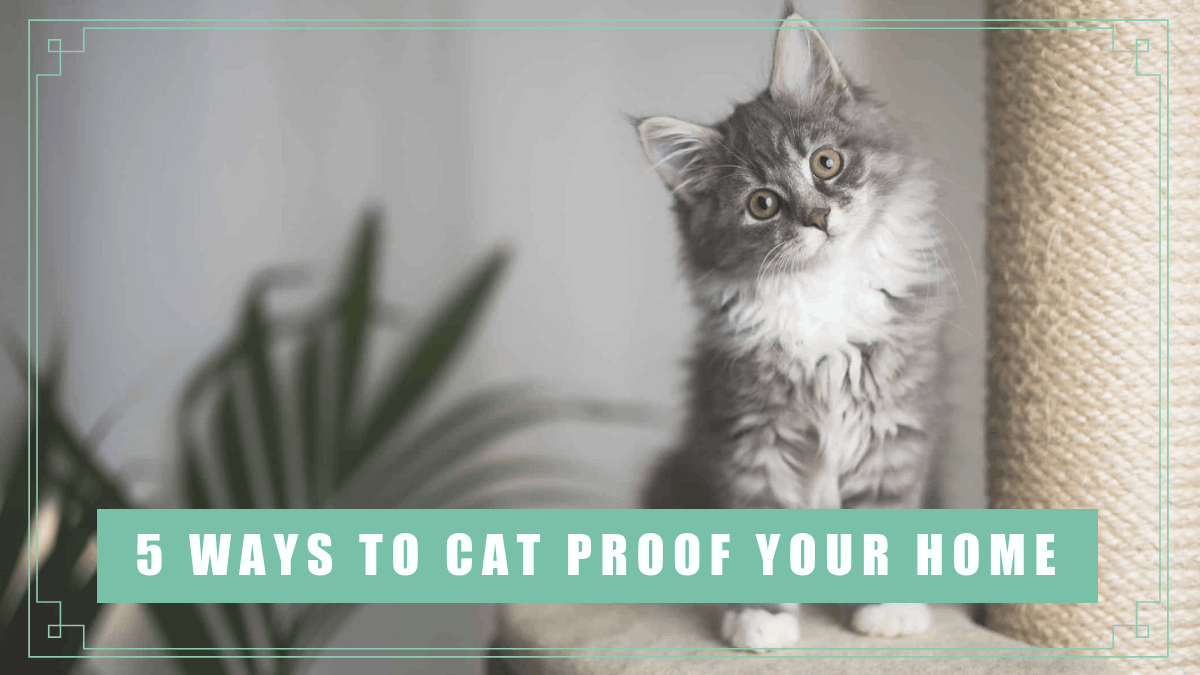One of the things I have learned working in a house call practice is cats are curious creatures. It’s what we love about them, and also what can make “cat proofing” your home so difficult. Cats have an innate want to explore and play, which can lead to getting themselves into some trouble.
Here are 5 ways you can make sure your home is safe for your kitty.
1. Lilies
Lilies are extremely toxic to kitties, even just two leaves can cause serious issues. It’s best to avoid planting lilies at your home if you have an outdoor cat. Also, make sure you do a thorough scan before bringing in cut flowers, to ensure they don’t have lilies. Some common symptoms of lily toxicity in cats are vomiting, diarrhea and lack of appetite. Lilies can cause kidney failure, so if you suspect your cat has eaten lilies, it’s best to contact your veterinarian immediately. If your cat is notorious for munching on houseplants or flowers, try some cat grass as an alternative!
2. Antifreeze
Antifreeze tastes sweet, which draws cats to it. The toxic chemical in antifreeze is ethylene glycol. It takes an extremely small amount (around a teaspoon) to cause extreme illness, and even death. If your cat walks in antifreeze and then grooms itself, this can be toxic enough to harm your kitty. Your cat may show no symptoms for about half an hour after consuming antifreeze, so if you suspect your kitty has consumed it, take your cat to a local emergency hospital immediately! Symptoms can include appearing “drunk”, weak and tired. Try to find products (windshield wiper fluid, de-icers, pesticides) without ethylene glycol, clean up any antifreeze spills immediately, and ensure all chemicals are safely stored away from your cats.
3. Strings and All Things Small!
It’s no secret cats love string, yarn and ribbon. Unfortunately, as fun as it may be for your kitty to play with, all of these items can be very dangerous for your cat. Cats tongues are covered with tiny little barbs that easily attach to these items. If you see a string hanging from your cat’s mouth or rear, don’t pull it, and if you suspect your cat has consumed something it wasn’t supposed to, call your veterinarian.
Common symptoms to look out for are vomiting, inappetence and lethargy. Try to keep any items your cat may consider fun or edible stored away safely, monitor your cat while playing with toys and make sure all cords are secured or hidden.
4. Outlet for Scratching!
Scratching is a normal and instinctive behavior in cats, but unfortunately our furniture is often an outlet to use this behavior. If you find that your cat likes to scratch your furniture, make sure you provide plenty of alternatives. You can try something smaller like a scratching post or a large cat tree that has more than one option for your kitty to scratch. Additionally, try rubbing catnip on the post to make it even more attractive to your cat!
5. Enrichment
Enrichment is a way to stimulate your cat’s mind and body, and ideally keep them out of trouble! Ideas like laser lights, safe toys, treat puzzles, outdoor catios and walks with a harness are all excellent ways to provide enrichment (and even exercise!) for your curious cat. Enrichment is a key component to cat proofing your house, as it ensures your kitty has fun and stimulating outlets, while also keeping them safe. There are SO many ways to provide enrichment – get creative and have fun with it!
How do you cat proof your home? Let me know in a comment below!
Madison



I have lots of large, heavy, decorative wicker baskets and planters. They are scratching posts.
Hi Joanne,
Such a good idea!! Thank you for sharing!
Warmly,
Claire